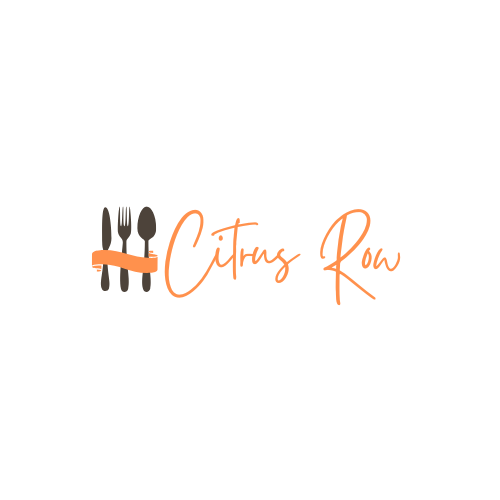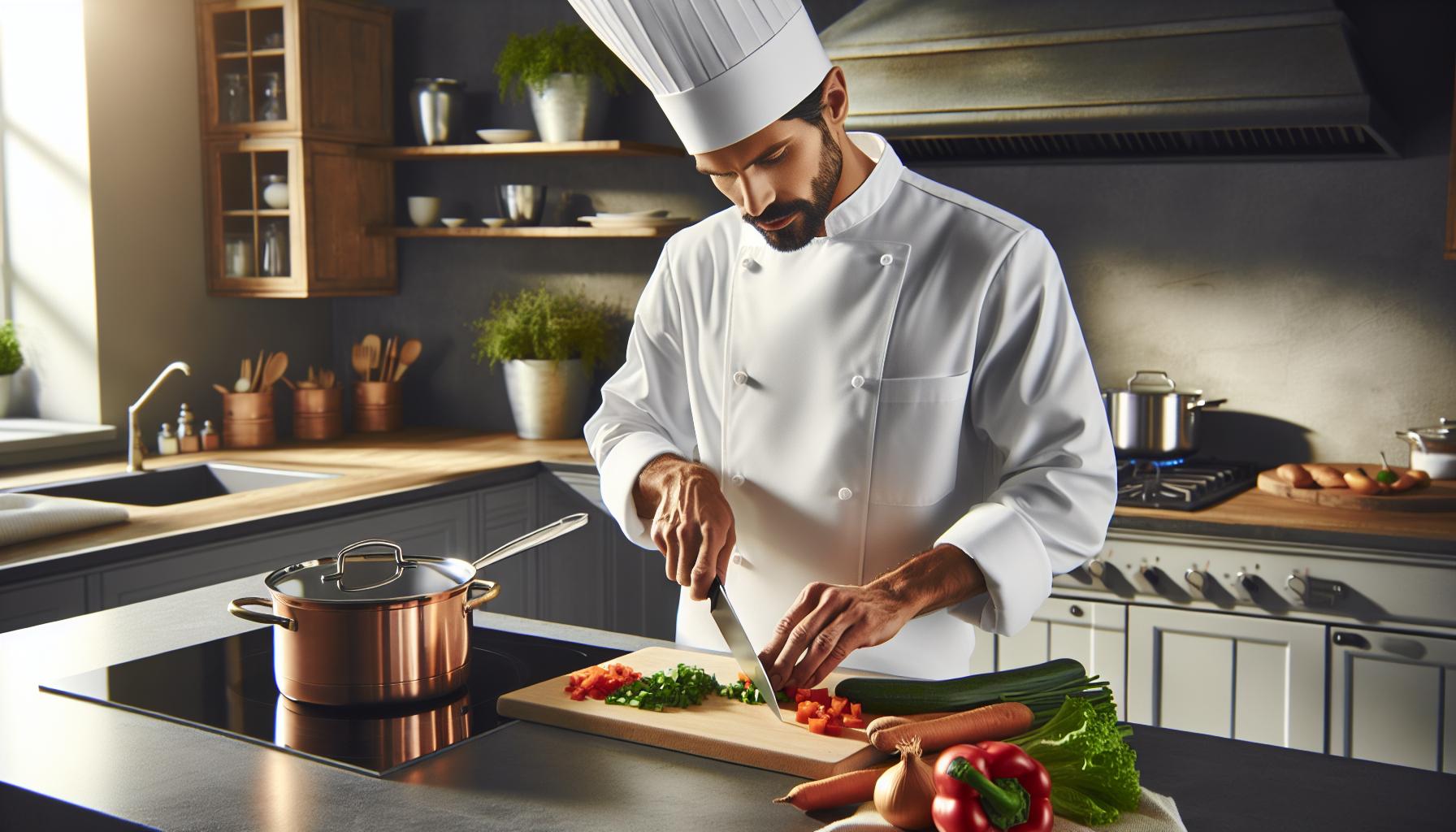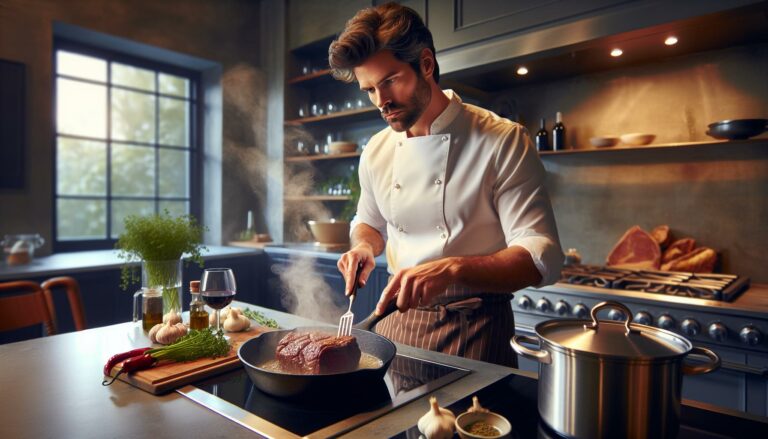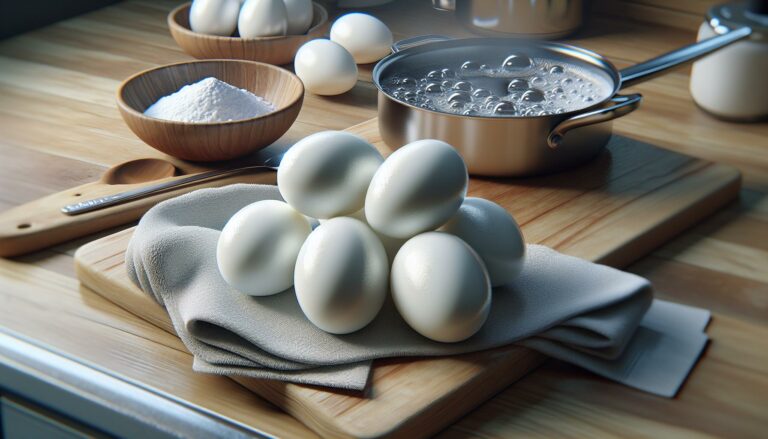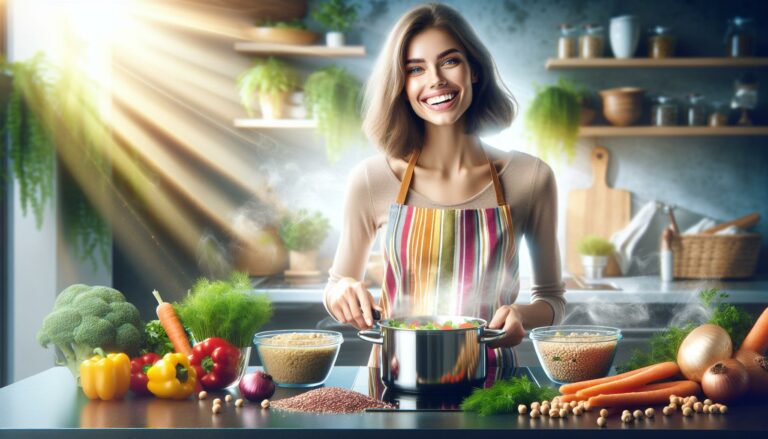French cooking techniques have shaped culinary excellence for centuries making professional chefs and home cooks weak in the knees. From the meticulous art of sauce-making to the precise knife skills that turn vegetables into works of art these methods have earned their place as the gold standard in professional kitchens worldwide.
Behind every perfectly seared steak and silky béarnaise sauce lies a foundation of time-tested techniques that French masters have refined over generations. While the fancy French terms like “mise en place” and “mirepoix” might sound intimidating they’re actually practical concepts that’ll transform anyone’s cooking game. Whether you’re a kitchen novice or a seasoned cook mastering these fundamental techniques will elevate your culinary creations from merely good to magnifique.
Understanding Classic French Cooking Methods
French cuisine relies on precise cooking techniques that form the foundation of professional culinary arts. These methods enhance flavor development through controlled temperature application.
Dry-Heat Cooking Techniques
French dry-heat techniques create complex flavors through caramelization or browning. Sautéing involves cooking ingredients in a shallow pan with minimal fat at high temperatures. Rôtissage (roasting) produces golden-brown meats with a crispy exterior at 375-450°F. Grilling (grillades) imparts distinctive char marks on proteins or vegetables over direct heat. Broiling uses top-down heat to create a caramelized crust while maintaining moisture.
Common Dry-Heat Applications:
- Searing foie gras creates a golden crust at 400°F
- Pan-frying sole meunière in clarified butter
- Roasting herb-crusted rack of lamb
- Grilling entrecôte (ribeye) on cast iron
Moist-Heat Cooking Techniques
Moist-heat methods use liquid or steam to cook ingredients while preserving tenderness. Braising combines initial searing with slow cooking in liquid. Poaching maintains temperatures between 160-180°F for delicate items. En papillote steams food inside parchment paper packets. Blanching briefly cooks vegetables in boiling water followed by an ice bath.
- Braising coq au vin in red wine
- Poaching fish in court bouillon
- Steaming mussels marinière
- Simmering pot-au-feu for 3 hours
- Blanching haricots verts for 3 minutes
Essential French Mother Sauces
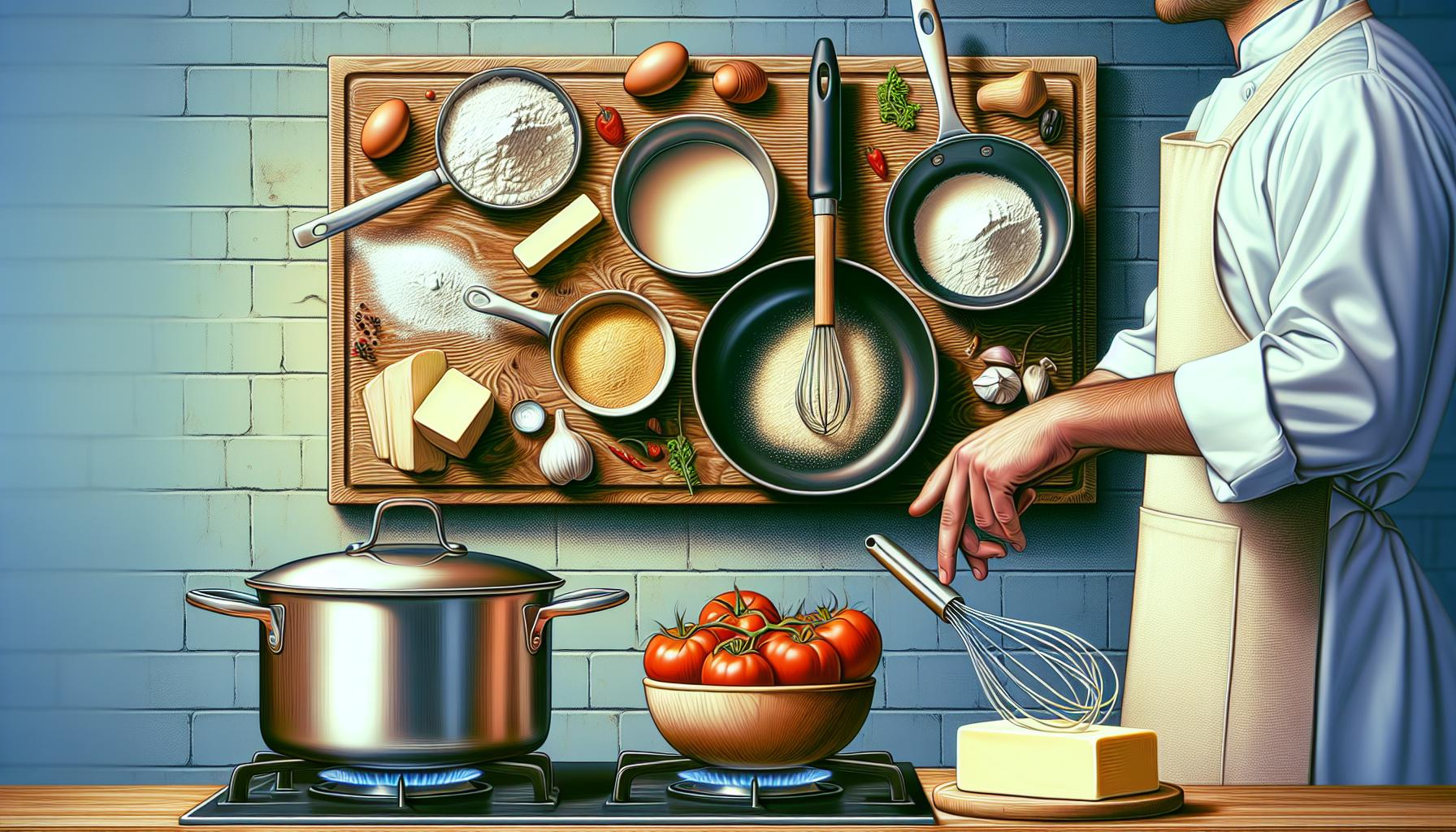
French cuisine relies on five foundational sauces known as the “mother sauces,” which form the basis for countless derivative sauces used in classic French dishes.
The Five Classic Mother Sauces
Béchamel sauce combines milk with a white roux to create a creamy white sauce. Espagnole sauce uses beef stock and mirepoix for a rich brown sauce. Hollandaise sauce blends clarified butter with egg yolks for a smooth, yellow emulsion. Tomato sauce incorporates fresh tomatoes with aromatics for a versatile red sauce. Velouté sauce starts with a light roux mixed with clear stock (chicken, veal, or fish) for a light, sophisticated sauce.
| Mother Sauce | Base Ingredients | Common Uses |
|---|---|---|
| Béchamel | Milk + White Roux | Gratins, Croque Monsieur |
| Espagnole | Beef Stock + Brown Roux | Demi-glace, Bordelaise |
| Hollandaise | Egg Yolks + Butter | Eggs Benedict, Asparagus |
| Tomato | Tomatoes + Aromatics | Pasta, Fish dishes |
| Velouté | Light Stock + Blonde Roux | Chicken Fricassee, Seafood |
Making Perfect Roux
Roux creation starts with equal parts butter and flour heated in a pan. Light roux cooks for 3-5 minutes, producing a nutty aroma ideal for béchamel sauce. Medium roux requires 6-7 minutes cooking time, developing a golden color perfect for velouté. Dark roux demands 8-15 minutes of constant stirring, achieving a deep brown color essential for espagnole sauce. Temperature control remains critical throughout the process at 350°F (176°C). Professional chefs measure ingredients by weight rather than volume for consistent results.
Knife Skills in French Cuisine
French cuisine demands precise knife cuts that enhance both presentation and cooking consistency. Professional French chefs master specific cutting techniques that influence cooking times and flavor distribution in dishes.
French Knife Cuts
Traditional French knife cuts incorporate standardized dimensions for consistent cooking results. The basic cuts include:
- Julienne: Creates matchstick-sized strips measuring 1/8 inch × 1/8 inch × 2 inches
- Brunoise: Forms tiny cubes measuring 1/8 inch × 1/8 inch × 1/8 inch
- Batonnet: Produces rectangular strips measuring 1/4 inch × 1/4 inch × 2-3 inches
- Paysanne: Creates thin, square slices measuring 1/2 inch × 1/2 inch × 1/8 inch
- Chiffonade: Forms delicate ribbons of leafy vegetables or herbs
| Cut Type | Dimensions | Common Uses |
|---|---|---|
| Julienne | 1/8″ × 1/8″ × 2″ | Garnishes, vegetables |
| Brunoise | 1/8″ × 1/8″ × 1/8″ | Aromatics, soups |
| Batonnet | 1/4″ × 1/4″ × 2-3″ | Root vegetables |
Proper Knife Handling
Professional French knife handling focuses on efficiency and safety through specific grip techniques. The blade grip utilizes the thumb and forefinger pinching the blade near the handle while remaining fingers wrap around the handle. The guide hand forms a claw position:
- Thumb placement behind fingers for protection
- Fingertips curled inward against food
- Middle knuckles guide blade movement
- Wrist remains level with cutting board
- Body position maintains straight line from elbow to knife tip
The knife moves in a rocking motion, keeping the tip in contact with the cutting board while the heel lifts and lowers in controlled movements.
Temperature Control and Heat Management
Temperature control forms the cornerstone of French cooking techniques, determining the difference between perfectly executed dishes and culinary mishaps. Proper heat management influences flavor development, texture variation and cooking precision across different methods.
Working with Direct Heat
Direct heat techniques in French cooking require precise temperature monitoring for optimal results. High-temperature cooking methods like sautéing demand temperatures between 350-375°F (175-190°C) to achieve proper caramelization. Professional French kitchens use specific heat zones on stovetops: high heat for searing meats (400°F/204°C), medium-high for sautéing vegetables (350°F/175°C), and medium for sauce reduction (300°F/150°C). The success of techniques like flambéing depends on maintaining consistent heat levels throughout the cooking process. Chefs monitor visual cues such as the rippling of oil, the size of bubbles in sauces and the color changes in proteins to gauge temperature accuracy.
Mastering Gentle Cooking
Gentle cooking methods in French cuisine rely on maintaining steady, low temperatures. Poaching requires water temperatures between 160-180°F (71-82°C) to create tender results without overcooking. French chefs use visual indicators like tiny bubbles breaking the surface for perfect poaching conditions. Sous vide cooking maintains precise temperatures within 1°F variance for consistent results: 131°F (55°C) for medium-rare beef, 140°F (60°C) for fish. Double boilers (bain-marie) keep delicate sauces like Hollandaise at 160°F (71°C) to prevent curdling. Temperature-controlled ovens maintain steady heat for dishes like coq au vin at 275°F (135°C) during long braising sessions.
Key French Cooking Terms and Terminology
French culinary terms describe specific techniques ingredients processes in professional kitchens. Learning these essential terms helps cooks understand recipes execute techniques properly.
Common Cooking Verbs
- Flamber – Setting food aflame with alcohol to add flavor
- Sauter – Quick cooking in a pan with minimal fat at high heat
- Mijoter – Gentle simmering to develop flavors
- Blanchir – Brief cooking in boiling water followed by an ice bath
- Monter – Incorporating cold butter into a sauce for shine texture
Kitchen Equipment Terms
- Chinois – Fine conical strainer for smooth sauces soups
- Mandoline – Adjustable slicer for uniform cuts
- Sautoir – Straight sided saute pan
- Marmite – Large stockpot for broths soups
- Tamis – Drum sieve for straining purees
| Term | Definition | Common Use |
|---|---|---|
| Mise en place | Organized prep setup | Pre-service preparation |
| Bouquet garni | Herb bundle | Flavoring stocks sauces |
| Fond | Stock base | Foundation for sauces |
| Mirepoix | Diced aromatics | Base for multiple dishes |
| Roux | Flour butter mixture | Thickening agent |
- Liaison – Egg cream mixture for thickening
- Déglacer – Adding liquid to deglaze pan
- Nappe – Coating consistency of sauce
- Réduction – Concentrating flavors through simmering
- Monter au beurre – Finishing sauce with butter
Professional Kitchen Organization (Brigade System)
The Brigade System organizes professional kitchens into specialized stations with clear hierarchies. Chef Auguste Escoffier developed this efficient system in the early 1900s to streamline kitchen operations.
Key positions in the Brigade System include:
- Chef de Cuisine (Executive Chef) – Manages kitchen operations supervises staff creates menus
- Sous Chef – Assists executive chef coordinates stations monitors quality control
- Chef de Partie (Station Chef) – Specializes in specific cooking areas:
- Saucier – Creates sauces stocks soups
- Poissonnier – Prepares fish seafood dishes
- Rôtisseur – Handles roasted meats grilled items
- Garde Manger – Manages cold dishes salads appetizers
- Pâtissier – Produces desserts baked goods pastries
- Commis (Junior Cook) – Assists station chefs performs prep work gains experience
| Brigade Level | Reports To | Primary Responsibilities |
|---|---|---|
| Executive Chef | Restaurant Owner | Menu Planning Operations |
| Sous Chef | Executive Chef | Daily Supervision Quality |
| Station Chef | Sous Chef | Specialized Cooking Tasks |
| Commis | Station Chef | Basic Prep Support |
Modern kitchens adapt this system based on size staffing requirements. Small restaurants combine roles while large establishments maintain traditional hierarchies. The Brigade System creates accountability ensures consistent quality through specialized expertise.
The organizational structure promotes efficient workflow communication between stations. Each position focuses on specific tasks allowing mastery of techniques maintaining high standards. Clear reporting lines prevent confusion during service periods enhance kitchen productivity.
This standardized approach transforms chaos into coordinated culinary excellence. French restaurants worldwide implement variations of this system demonstrating its enduring effectiveness in professional kitchens.
Must-Have French Cooking Equipment
Professional French cooking relies on specific equipment designed for precise execution of classic techniques. The right tools enable proper temperature control, consistent results, and efficient preparation methods.
Cookware Essentials
French kitchens prioritize high-quality copper saucepans, sauté pans, and stockpots for superior heat conductivity. A 10-inch copper sauté pan regulates temperature effectively for delicate sauces. Heavy-bottomed stainless steel pots ranging from 2-8 quarts accommodate various cooking methods like braising and poaching. Cast iron Dutch ovens, typically 5-7 quarts, excel at even heat distribution for slow-cooking dishes such as coq au vin or cassoulet. Reliable nonstick pans sized 8-12 inches handle delicate items like omelets and crêpes. Professional-grade roasting pans with racks elevate meats for proper air circulation during cooking.
Important Tools and Gadgets
French cuisine demands specialized tools for precise preparation and presentation. A digital scale measures ingredients in grams for consistent results. Thermometers monitor exact temperatures: meat thermometers read internal doneness while candy thermometers track sugar stages. Essential straining equipment includes fine-mesh sieves and chinois for smooth sauces. Mandolines create uniform vegetable cuts at adjustable thicknesses from 1-10 millimeters. Precise measuring tools encompass graduated measuring cups, digital scales accurate to 0.1 grams, and metric conversion charts. Sharp paring knives, chef’s knives, and specialized fish filleting knives complete the essential knife collection.
Conclusion
French cooking techniques stand as the cornerstone of culinary excellence worldwide. These time-tested methods have shaped modern gastronomy and continue to influence both professional kitchens and home cooking. By mastering fundamental skills like precise knife work temperature control and sauce-making home cooks can elevate their dishes to restaurant quality.
The structured approach of French cuisine through the Brigade System and proper equipment selection ensures consistent exceptional results. Whether it’s perfecting a mother sauce or executing the perfect julienne cut these techniques provide a solid foundation for culinary success. Mastering French cooking methods opens doors to endless culinary possibilities and a deeper appreciation for the art of food preparation.
